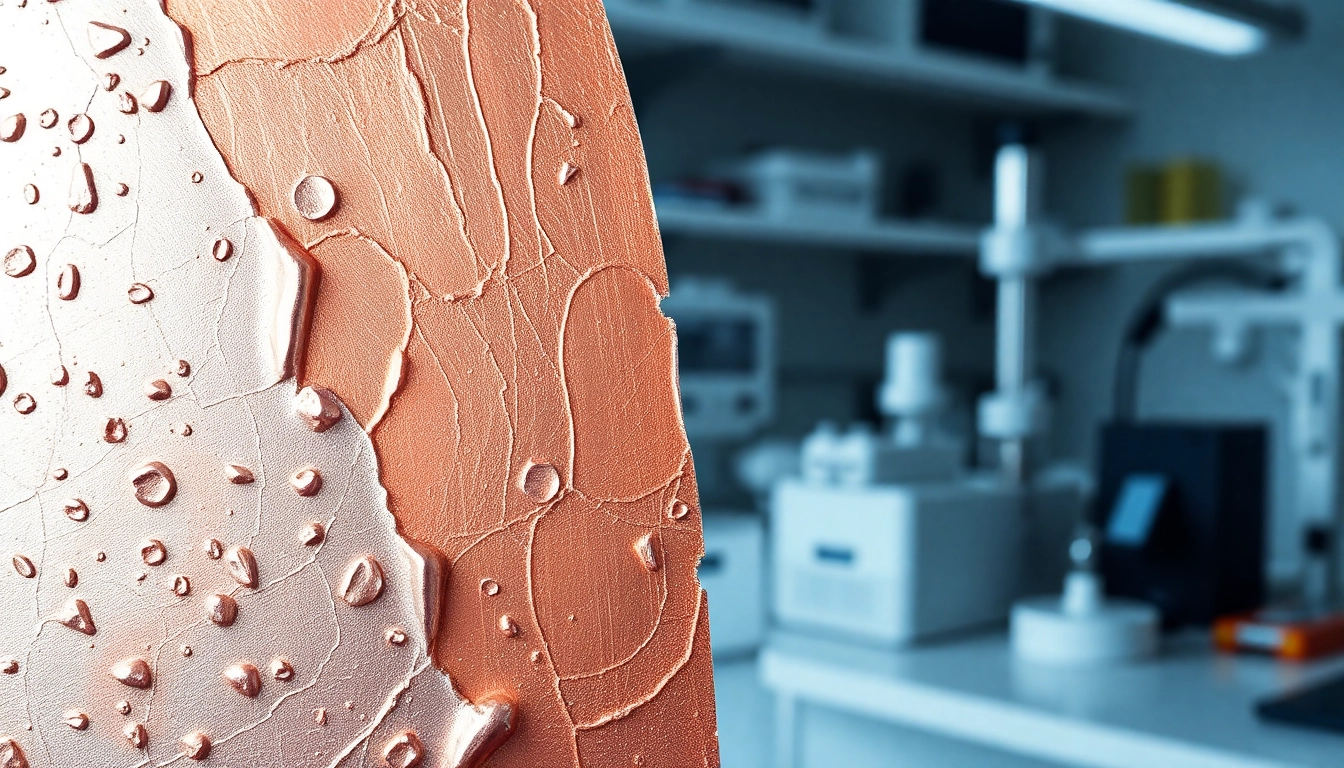An Overview of Electromagnetic Shielding Materials
What is Electromagnetic Shielding?
Electromagnetic shielding refers to the practice of protecting sensitive electronic equipment or facilities from electromagnetic interference (EMI). This interference can come from various sources such as electrical devices, radio transmitters, and other electromagnetic fields in the environment. Shielding materials work by reflecting, absorbing, or scattering the electromagnetic waves, thus preventing them from affecting the sensitive components within a device. In essence, electromagnetic shielding materials create a barrier that reduces the electromagnetic field strength and mitigates its potential disruptions.
Importance of EMI Shielding
The importance of electromagnetic shielding cannot be overstated, especially in an age where technology is rapidly evolving. As devices become denser and more interconnected, the risk of interference increases. For instance, EMI can lead to data loss, performance degradation, or even complete device failure, which can have significant financial and operational consequences.
The use of electromagnetic shielding materials is critical in industries such as telecommunications, medical devices, aerospace, and consumer electronics. In such environments, maintaining signal integrity and operational reliability is paramount. Moreover, EMI shielding fosters compliance with regulatory standards, preventing unintended emissions and ensuring the safety of electrical equipment.
Common Applications of Shielding Materials
Electromagnetic shielding materials are utilized across various sectors for different applications, including:
- Telecommunications: EMI shielding protects sensitive communication equipment from interference, ensuring high-quality signal transmission.
- Medical Devices: In hospitals, MRI machines and other imaging technologies require effective shielding to minimize interference from nearby electronic devices.
- Aerospace: Aircraft need robust EMI shielding to ensure operational reliability and safety in the harsh electromagnetic environments encountered during flight.
- Consumer Electronics: Modern smartphones and computers use shielding materials to prevent malfunctioning due to interference from other devices.
- Automotive: With the increasing number of electronic systems in vehicles, electromagnetic shielding is vital to enhance safety and reliability.
Types of Electromagnetic Shielding Materials
Metals Used for Shielding
Metals are among the most commonly used materials for electrical shielding due to their excellent conductivity and ability to reflect electromagnetic waves. Various metals employed include:
- Copper: Known for its high conductivity, copper is the most effective metal for EMI shielding. It efficiently attenuates both electric and magnetic fields, making it the first choice for many applications.
- Aluminum: While not as conductive as copper, aluminum is lighter and more cost-effective, making it suitable for various applications, including electronics.
- Steel: Used predominantly in structural applications, steel provides robust protection and is often used in the shielding of larger enclosures.
- Nickel: Offers excellent corrosion resistance and is often integrated with other metals to improve their shielding effectiveness.
- Silver: While expensive, silver has the highest electrical conductivity and is used in specialized applications requiring optimum performance.
Use of Conductive Polymers
In addition to traditional metals, conductive polymers are gaining traction as EMI shielding materials. These materials combine the lightweight benefits of polymers with the shielding capabilities of metals. Some advantages of conductive polymers include:
- Flexibility: They can be easily shaped and molded into different forms, which is advantageous for complex designs.
- Lightweight: Conductive polymers are much lighter compared to metals, making them preferable for portable devices.
- Corrosion Resistance: Unlike metals, conductive polymers do not corrode, increasing their longevity in various environments.
Examples of conductive polymers include polyaniline and polypyrrole, which can be used in various applications ranging from consumer electronics to automotive components.
Comparing Natural vs. Synthetic Materials
The choice between natural and synthetic shielding materials can significantly influence the performance efficiency and environmental impact of a project. Natural materials such as ferrite and carbon-based compounds have been utilized for shielding, providing acceptable performance in specific applications. However, synthetic materials, especially those engineered at the molecular level, often yield better results regarding conductivity and shielding effectiveness.
Here are some comparisons:
- Conductivity: Synthetic materials generally offer higher conductivity compared to natural ones.
- Cost: While natural materials may sometimes be cheaper, synthetic options can be more cost-effective in the long run due to their durability and effectiveness.
- Environmental Impact: Natural materials are often more sustainable, but synthetic materials can be engineered to be eco-friendly without compromising performance.
Selecting the Right Shielding Material
Factors to Consider in Material Selection
Selecting the appropriate electromagnetic shielding material involves several critical factors that can affect efficiency and cost. Key considerations include:
- Frequency Range: The effectiveness of shielding materials varies with frequency. Higher frequencies may require materials specifically engineered to operate in those spectrums.
- Material Cost: Budget constraints often dictate the types of materials that can be used. While copper is effective, aluminum may present a more cost-effective alternative.
- Physical Properties: The material’s weight, flexibility, and durability are also important, especially for applications in mobile or portable devices.
- Environmental Considerations: For some applications, particularly in consumer electronics, materials must meet specific environmental regulations regarding toxicity and recyclability.
Performance Metrics of Shielding Materials
When evaluating shielding materials, various performance metrics can help gauge their effectiveness:
- Shielding Effectiveness (SE): This is the material’s ability to reduce electromagnetic interference, typically measured in decibels (dB).
- Conductivity: The material’s electrical conductivity is crucial in determining its ability to reflect electromagnetic waves.
- Thickness: Thicker materials may provide better shielding, but trade-offs regarding weight and physical space must be considered.
- Durability: Resistance to environmental factors (corrosion, temperature, etc.) impacts the lifespan and reliability of the shielding.
Case Studies: Effective Material Usage
Consider two industries that heavily rely on electromagnetic shielding: the medical and aerospace sectors. In the medical field, MRI machines utilize copper shielding to eliminate interference that can distort imaging results. The high conductivity of copper allows it to agglomerate interference effectively, ensuring that the scans are accurate.
In aerospace, aircraft electronics must operate flawlessly under significant EMI exposure. Here, aluminum alloys are frequently used alongside grounded conductive coatings to create a robust shielding envelope. These materials provide adequate shielding while remaining lightweight, which is a crucial consideration in aircraft design.
Installation Techniques for Shielding Materials
Best Practices in Material Application
Installing electromagnetic shielding materials properly is just as crucial as selecting them. Best practices for installation include:
- Surface Preparation: Ensure surfaces are cleaned and treated to allow for strong adhesion and better electrical contacts.
- Seam Conductivity: Utilize conductive adhesives or welds at seams to maintain the integrity of the shielding.
- Layering Techniques: In cases where thicker barriers are needed, layer materials appropriately based on their properties to maximize shielding performance.
Guidelines for Seamless Integration
Integrating shielding materials into existing designs requires careful planning. Considerations should include:
- Design Compatibility: Evaluate how new materials will fit with existing structures and components
- Testing: Always test before full deployment; small pilot installations can help identify potential issues.
- Avoiding Gaps: Ensure there are no gaps in shielding that could allow EMI to penetrate through. Continuous conductive paths are critical.
Maintenance Considerations for Shielded Structures
To ensure long-lasting performance, maintenance of shielded structures is necessary. This includes checking for:
- Wear and Tear: Regular inspections for physical damage or degradation.
- Conductive Paths: Ensuring that seams and connections maintain electrical continuity.
- Environmental Impact: Assessing any potential corrosion that may occur due to environmental exposure.
Future Trends in Electromagnetic Shielding
Emerging Technologies and Materials
As technology advances, so do the materials used for electromagnetic shielding. Emerging materials like graphene and nanocomposites show great promise due to their excellent conductivity and lightweight properties. Graphene, for instance, is becoming increasingly relevant due to its remarkable electrical properties and strength, providing an opportunity to create super-thin shielding solutions.
Environmental Considerations
In today’s eco-conscious environment, manufacturers are urged to consider the sustainability of their materials. Innovations such as biodegradable polymers and recycled metals are gaining traction, potentially providing effective shielding without significant environmental impact.
Predictions for the Next Decade in EMI Shielding
The next decade may see the development of smarter shielding materials that can adapt to varying EMI environments. This could include materials that actively sense and respond to changes in electromagnetic levels, automatically adjusting their shielding properties as needed. Such innovations could redefine how we approach electromagnetic interference and enhance device reliability across various applications.






